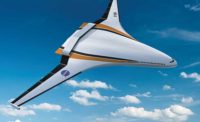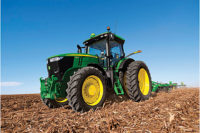“A number of commercial autonomous tractors are already available on the market,” says Wim Symens, program leader for energy-efficient machines at Flanders Mechatronics Technology Centre. “Mostly, they are programmed to perform some particular tasks, such as driving straight lines, making a headland turn or following another (manned) vehicle. For this, they are tuned once during commissioning, yet do not exhibit the capability of learning and adapting to various conditions.”
“While many people are fascinated with autonomous operation, that involves some significant and complex planning,” warns Michael Gomes, Director of Marketing at Topcon Precision Agriculture, a leading supplier of satellite-positioning and guidance systems. “Removing the last person with eyes, ears, hands and decision-making capability is a tall order. [But, it’s] interesting to contemplate and fun to discuss.”
In addition to changing the way farmers operate, autonomous tractors could affect the way tractors are assembled. “Clearly, to replace the driver, such a tractor needs to be equipped with quite [a few] extra sensors, [which would make assembly more complex],” says Symens. “On the other hand, a lot of effort in the development and assembly of tractors these days is put into functionalities that are particularly of interest to the comfort of the driver, such as cabins with heating and cooling, seats with decent suspension and so on.
“Those would no longer be necessary with autonomous tractors,” adds Symens. “Therefore, assembling driverless tractors [would probably not] be more time-consuming than traditional tractors.”
According to Helmut Endres, senior vice president of worldwide engineering at AGCO Corp., unmanned tractors aren’t “significantly more time-consuming to assemble. On larger, more advanced tractors, components to make tractors ready for assisted steering are approaching the status of being standard equipment and many of the needed components are simply revised versions of existing components, such as power steering control valves.
“Usually, a GPS-ready valve installs in much the same time as a noncompatible valve,” Endres points out. “The total sum of installing all the assisted steering, telemetry, and other features and components needed to make [an unmanned] tractor would tend to add some assembly time and complexity compared to a assembling a lesser equipped tractor.
“Increasingly, agricultural equipment [manufacturers] make use of CANBUS and ISOBUS technology, so the wiring and data network are already standard machine design features that greatly simplify and facilitate incorporating features like assisted steering and telemetry,” claims Endres.




